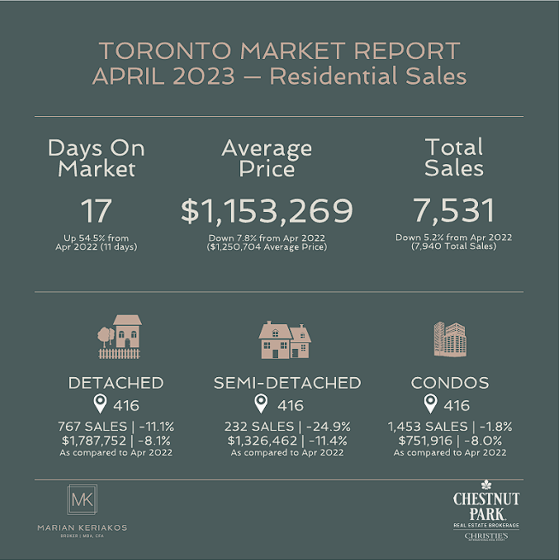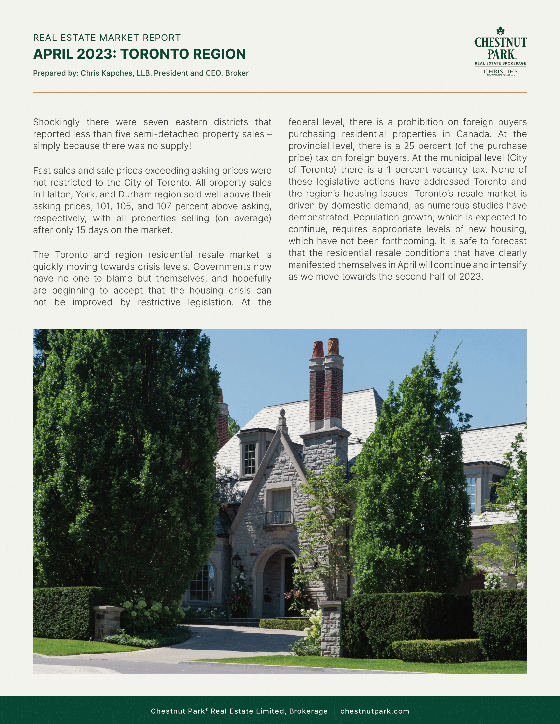With home prices and rates still relatively high, securing a mortgage can feel daunting––even to the most experienced borrowers. But don't let that deter you: If other homebuyers’ experiences are any indication, odds are you'll eventually find a home loan that works well for you.
In fact, research from the Real Estate and Mortgage Institute of Canada (REMIC) found that even after the Bank of Canada pushed rates to a 22-year high, most homeowners still felt satisfied with their mortgages. According to an online survey, only a small fraction regretted the mortgage that they'd chosen because they felt “locked in at ‘a bad rate.’” Fewer than a third said they would have picked another property if they'd known their mortgage rates would climb.1
Now that the Bank of Canada's policy rate has finally moved lower, this is an ideal time to compare mortgages and get pre-qualified so you can confidently scout for deals. That way, you'll be ready to jump fast if you spot an opportunity.
To help you get started, I've rounded up four of the most important factors to consider when narrowing your list of potential mortgage options.
- Your Credit Score
That three-digit number that credit scoring companies like FICO assign not only influences your interest rate, but it also helps determine the type of mortgage you can get.2
The best-priced mortgages typically go to borrowers with scores of at least 720 or more. But if your credit score is lower, you still have options.3
To qualify for an insured mortgage with less than 20% down, you or a co-borrower will likely need at least a 600 credit score, unless you're a Canadian newcomer. Canada Mortgage and Housing Corporation (CMHC) reduced the minimum required score for a typical CMHC-insured mortgage from 680 to 600, but the private insurers Sagen and Canada Guaranty Mortgage set their own thresholds and may require a higher score.4,5,6
New Canadians, on the other hand, may qualify for an insured mortgage even if they have little to no Canadian credit history. Many conventional lenders offer special loans called “newcomer mortgages” to immigrants who have landed within the past five years.7
However, if your score is low because you have a history of missed payments or a high credit utilization ratio (which is the amount of debt you have relative to your credit limit), then you may not qualify for a conventional mortgage and may need to look to alternative lenders.8
Nonbank lenders known as “B lenders” specialize in serving nontraditional borrowers, such as self-employed homebuyers, so their standards are usually more relaxed. You'll probably still need a minimum score of around 600, though, as well as a down payment of 20% or higher.9
If your score is well below 600, then your options are more limited. Some home sellers offer owner-financed mortgages. Alternatively, private investors who specialize in subprime loans (known as “C lenders”) may work with you.10 But if you can afford to wait for a higher score, you may be better off paying down your existing debt instead. The interest you save with a more competitively priced loan could enable you to buy a more desirable home.11
- Your Income and Expenses
The amount of money you make, as well as how much you owe, will also influence your mortgage options.
Lenders like to see that you still have plenty of income left over after paying your expenses. So when evaluating your creditworthiness and ability to pass a stress test, a mortgage lender will look at your current pay and outstanding debts, like student loans and credit card balances.12
They will also compare your expected income to the total amount of debt you'll carry once you've bought the home. This is called your total debt service (TDS) ratio and lenders consider it a key indicator of whether you can afford a particular mortgage.12
The Financial Consumer Agency of Canada caps the recommended TDS ratio for a mortgage from a federally regulated entity, such as a bank or federal credit union, at 44% of a borrower's income. However, some nonbank lenders may still work with you if your TDS ratio is higher.13
In addition to outstanding debts, lenders take into account other expenses unique to a home, such as property taxes, heating costs, and 50% of condo fees, if applicable. To pass Canada's mortgage stress test (which is necessary for any federally regulated lender), your total housing costs should eat up no more than 39% of your qualifying income. This is called your gross debt service (GDS) ratio, and it's a key figure to keep in mind when comparing potential homes.12
In general, the lower your TDS and GDS ratios are, the better your odds will be of securing a competitive mortgage. That's especially true now that Canada's top bank regulator, the Office of the Superintendent of Financial Institutions (OFSI), has announced more stringent rules for federally regulated lenders that work with “highly indebted” mortgage borrowers.14
Unregulated lenders have more flexibility and so may be more forgiving. However, they could still require you to pass a mortgage stress test.15
- Your Expected Down Payment
The size of your down payment will also impact the type of mortgage you can get.
You don't have to put down 20% to qualify for a competitively-priced mortgage from a conventional lender. (In fact, interest rates are often lower for insured mortgages than they are for uninsured ones.16) But you will need a significant amount.17
The lowest down payment amount you can get away with is usually 5%. However, depending on your income and credit history, a lender may require more to fund the home you want.17
Since conventional mortgages with down payments below 20% automatically require mortgage default insurance, you'll also want to take into account the added expense. Depending on the size of your down payment, it could cost you as much as 0.6% to 4% of your loan amount.18
In most cases, mortgage amortization will also be capped at a maximum of 25 years if you opt for an insured mortgage.A shorter amortization schedule, such as a 10 or 15-year mortgage, will save you money on interest. However, your monthly mortgage payment will also be higher.19
With an uninsured mortgage, by contrast, you could extend your mortgage amortization to 30 years, or possibly even longer with some mortgage lenders. That could help make your monthly payments more affordable. But to be approved, you'll typically need substantial home equity.20
If you're a first-time homebuyer, you'll have even more options. For example, you may be able to get a 30-year uninsured loan if you buy a brand-new property.21
Keep in mind, though, that mortgages with smaller down payments not only cost more over time. They may also be harder to get––especially if there's a major gap between your qualifying income and typical home prices. In that case, you'll likely need a healthy down payment to help make up the difference. An extra big down payment above 25% to 35% could also help you qualify for mortgages you wouldn't get otherwise.17
- Your Lifestyle and Risk Tolerance
In addition to your budget, one of the most important factors to consider when comparing mortgage options is your temperament. The key to finding the right mortgage for you is to look for a loan that will fit comfortably into your daily life. For example, I recommend asking yourself questions such as: Are you a natural risk taker, or do you prefer firm plans and predictability? Can you afford a bigger mortgage payment if interest rates increase, or are your anticipated home expenses already stretching your monthly budget?
Similarly, consider your ideal payment schedule. If you like the idea of making lots of extra payments and paying off your mortgage early, then you may prefer an open mortgage. However, a closed mortgage will typically offer a lower rate.22
Term lengths and mortgage rates are also important factors to consider. But given the economy's uncertainty, it can be tricky to predict the most optimal mortgage type.
For example, choosing a shorter-term mortgage, such as a three-year fixed rate mortgage, or opting for a more flexible variable rate one can give you some valuable wiggle room in case interest rates decrease. But if rates unexpectedly pick up, you could be caught off guard by a higher monthly payment. Term lengths can also impact the mortgage rates you're offered.23
Five-year fixed rate mortgages, on the other hand, may feel more comfortable to risk-averse borrowers. They are also the most common type of mortgage in Canada and are often a great choice for those who prefer to set-it-and-forget-it. But locking yourself into such a long mortgage could also be risky. With a longer term mortgage, you not only risk overpaying rates go down, you also risk getting stuck with a loan that requires a big multi-year commitment.23, 24
BOTTOMLINE
Regardless of the loan you choose, it pays to shop around and carefully compare terms. According to a recent survey by Mortgage Professionals Canada, most homebuyers risk leaving money on the table by failing to negotiate and sticking with the first interest rate offer they receive.25
Fortunately, I have a vetted list of mortgage professionals who can explain your options, answer your questions, and help you find the best loan to meet your needs. I can also develop a custom plan for securing a great home that fits your budget. Reach out when you're ready to get started.
The above references an opinion and is for informational purposes only. It is not intended to be financial, legal, or tax advice. Consult the appropriate professionals for advice regarding your individual needs.
Sources:
- Real Estate and Mortgage Institute of Canada (REMIC) - https://www.newswire.ca/news-releases/real-estate-regrets-over-a-third-of-canadians-regret-their-current-mortgage-situation-834450472.html
- Globe and Mail - https://www.theglobeandmail.com/investing/personal-finance/household-finances/article-how-mortgage-shoppers-can-weave-their-way-through-the-credit-score/
- Rates.ca -
https://rates.ca/resources/does-your-credit-score-affect-your-mortgage-rate - CMHC -
https://www.cmhc-schl.gc.ca/media-newsroom/notices/2021/cmhc-reviews-underwriting-criteria - Sagen -
https://www.sagen.ca/ups/product-specific-underwriting-guidelines/ - Canada Guarantee -
https://www.canadaguaranty.ca/products-at-a-glance/ - Wowa -
https://wowa.ca/newcomers-mortgage - MPA Magazine - https://www.mpamag.com/ca/mortgage-industry/guides/whats-the-right-credit-score-to-buy-a-house-in-canada/443717
- Nerdwallet -
https://www.nerdwallet.com/ca/mortgages/understanding-b-lender-mortgages - Ratehub -
https://www.ratehub.ca/private-mortgage-loans - Ratehub -
https://rates.ca/resources/does-your-credit-score-affect-your-mortgage-rate - Financial Consumer Agency of Canada - https://www.canada.ca/en/financial-consumer-agency/services/mortgages/preparing-mortgage.html
- Nerdwallet -
https://www.nerdwallet.com/ca/mortgages/what-are-debt-service-ratios - Office of the Superintendent of Financial Institutions -
https://www.osfi-bsif.gc.ca/en/news/loan-income-limit - Lowest Rates - https://www.lowestrates.ca/resource-centre/mortgage/difference-between-a-lenders-and-private-mortgage-lenders-canada
- Globe and Mail - https://www.theglobeandmail.com/investing/personal-finance/household-finances/article-insurance-mortgage-save-money/
- MPA Magazine - https://www.mpamag.com/ca/mortgage-industry/guides/down-payment-on-a-house-in-canada-what-you-need-to-know/435534
- Ratehub -
https://www.ratehub.ca/cmhc-mortgage-insurance - Financial Consumer Agency of Canada - https://www.canada.ca/en/financial-consumer-agency/services/mortgages/mortgage-terms-amortization.html
- Global News - https://globalnews.ca/news/9815405/mortgage-amortization-risks-costs-interest-rate-canada/
- MPA Magazine - https://www.mpamag.com/ca/mortgage-industry/market-updates/first-time-buyers-can-save-thousands-with-cmhcs-30-year-mortgages-says-ratehub/493319
- Financial Consumer Agency of Canada - https://www.canada.ca/en/financial-consumer-agency/services/mortgages/choose-mortgage.html
- MoneySense - https://www.moneysense.ca/spend/real-estate/mortgages/3-years-versus-5-year-mortgage-term/
- MPA Magazine - https://www.mpamag.com/ca/mortgage-industry/guides/the-types-of-mortgage-in-canada-you-can-choose-from/436516
- Canadian Mortgage Trends - https://www.canadianmortgagetrends.com/2024/06/canadians-leaving-money-on-the-table-by-not-negotiating-their-mortgage-renewal-rates



















